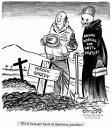Only 16% of Kentucky coal miners get screened for black lung disease, an occupational lung disease caused by prolonged breathing of coal mine dust. As early as 1822 the disease was recognized in coal miners. It was called miner’s asthma at that time. Black lung is preventable, just like all occupational diseases.
The government provides free programs to screen miners for black lung. But, according to a story in the Appalachian News, miners avoid screenings out of fear of losing their jobs:
“Miners must share their black-lung diagnosis with their bosses almost immediately if they want to receive state benefits. And if miners are found to have black lung, there’s often no safe place for them to work in a mine. That leaves many worried that their employers would find reasons to let them go.”
The highest paying jobs are the ones that expose miners to a lot of dust. Additionally black lung disease has a long latency period, it does not manifest itself until years after the initial exposures occurred. The disease is also dose related. If you are taken out of the dusty environment it will slow the progression of the disease.
In Kentucky, black lung disease death have increased 38 percent from 1998 to 2004, whole the rates have dropped in other coal mining states. KY miners who were x-rayed last year had several times higher rates of black lung disease than expected.
This situation needs to change. Miners should not have to suffer from a preventable disease. The government needs to change the rules regarding compensation, so that miners are comfortable diagnosing the disease earlier. The companies that use up these employees, until they are no longer fit for any employment, need to be held accountable for the condition they leave their employees in and the employment laws need to be changed to prevent firings. Unions might be the answer.
Occupational dust disease is preventable. The levels which cause disease are known and dust control measures that would prevent disease can be implemented. Companies have refused to do this for many years. No reason to believe they will change any time soon.


